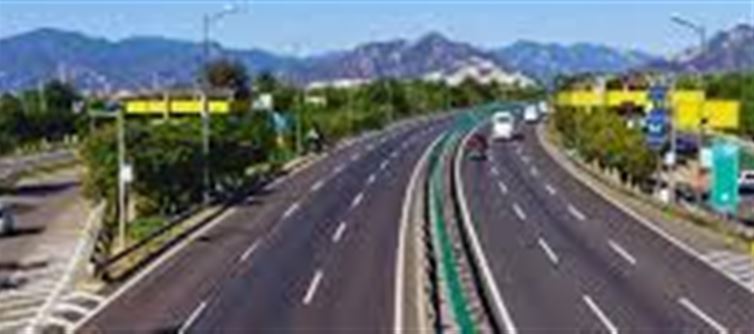
The maharashtra cabinet has cleared a slew of big-ticket infrastructure, transport, and social welfare projects aimed at boosting connectivity, easing urban congestion, and supporting citizens across sectors. From Mumbai’s ambitious Wadala-CSMT-Gateway metro line to Nagpur’s IBFC hub, the decisions reflect a forward-looking development vision.
Here’s a breakdown of the 10 most important takeaways from the cabinet meeting.
1 Mumbai’s Wadala-CSMT-Gateway Metro Gets ₹23,487 Cr Boost
One of the most awaited projects, the Metro Line-11 (Wadala-CSMT-Gateway of India), has been approved with a massive outlay of ₹23,487.51 crore.
This line is expected to revolutionize South Mumbai’s connectivity by directly linking the city’s central hub to the heritage-rich Gateway area, easing both commuter travel and tourist access.
2 pune Metro Extensions & New Stations Cleared
In pune, the cabinet approved:
- Line-2 and Line-4 extensions to expand the metro network.
- Two new stations at Balajinagar and Bibwewadi.
- Relocation of Katraj station on the Swargate-Katraj corridor.
This expansion, with an additional outlay of ₹683.11 crore, aims to address Pune’s growing population and traffic congestion.
3 thane Ring Metro for Smoother Commuting
Thane is set to get its own ring metro, improving connectivity within the city and linking it seamlessly to surrounding areas.
Additionally, a new elevated corridor will connect thane to the upcoming Navi mumbai international Airport, developed on a PPP model via CIDCO.
4 nagpur Metro Phase-II Expansion
Nagpur, which has emerged as a model for modern metro development, will see its network expanded under Metro Phase-II.
The plan also ties in with other regional projects, including an outer ring road and four new truck and bus terminals, reducing urban traffic congestion and promoting trade efficiency.
5 Pune-Lonavala Suburban rail Upgrade
The cabinet finally approved Maharashtra’s participation in the long-pending Pune-Lonavala suburban railway third and fourth line project.
- Total project cost: ₹5,100 crore.
- Maharashtra’s share: ₹2,550 crore.
- Local contributions: pune Municipal Corporation (20%), Pimpri-Chinchwad Municipal Corporation (20%), PMRDA (30%).
This expansion will ease the growing passenger load and improve daily commuter experiences on one of Pune’s busiest corridors.
6 Social Welfare Schemes Enhanced
The Sanjay gandhi Niradhar Yojana and Shravanbal scheme for persons with disabilities have been upgraded.
- Monthly assistance increased by ₹1,000, raising it to ₹2,500 per beneficiary.
This step strengthens the social security net for vulnerable groups.
7 education Boost with Tribal Scholarships
In education, the state will now implement the Centre’s pre-matric scholarship scheme for scheduled tribes (ST) students of Classes 9 & 10.
This will replace the state’s Golden Jubilee Tribal Pre-Matric Scholarship, ensuring more funding and support for tribal students.
8 Fly-Ash Utilisation Policy Cleared
The cabinet approved a policy for the use of fly-ash generated by Mahagenco’s thermal power plants.
This eco-friendly move aims to promote sustainable practices in construction and infrastructure projects, reducing environmental hazards caused by fly-ash waste.
9Labour & industry Laws Amended
Key labour-related reforms were also cleared:
- Amendments to the Maharashtra Shops and Establishments Act (2017).
- Amendments to the Factories Act (1948).
These changes are expected to modernise working conditions, streamline compliance, and encourage industrial growth in the state.
Nagpur to Get international Business & Finance Centre (IBFC)
A major economic push comes with the approval for an International Business and Finance Centre (IBFC) in nagpur under the “New Nagpur” project.
- Land acquired: 692 hectares in Hingna taluka.
- Developed by the Nagpur Metropolitan Region Development Authority.
This project positions nagpur as a future hub for business, trade, and global finane in central India.
Final Word: maharashtra on the Move
From urban transport upgrades in mumbai, pune, thane, and Nagpur to social schemes and eco-friendly policies, the maharashtra cabinet’s decisions mark a significant step in the state’s infrastructure and welfare roadmap.
These projects not only promise faster travel and better city planning but also strengthen the social and economic backbone of the state. For citizens, the message is clear: maharashtra is building for the future.
Disclaimer:
The views and opinions expressed in this article are those of the author and do not necessarily reflect the official policy or position of any agency, organization, employer, or company. All information provided is for general informational purposes only. While every effort has been made to ensure accuracy, we make no representations or warranties of any kind, express or implied, about the completeness, reliability, or suitability of the information contained herein. Readers are advised to verify facts and seek professional advice where necessary. Any reliance placed on such information is strictly at the reader’s own risk..jpg)




 click and follow Indiaherald WhatsApp channel
click and follow Indiaherald WhatsApp channel